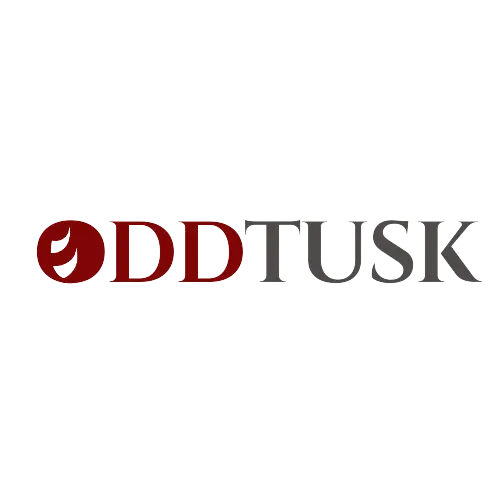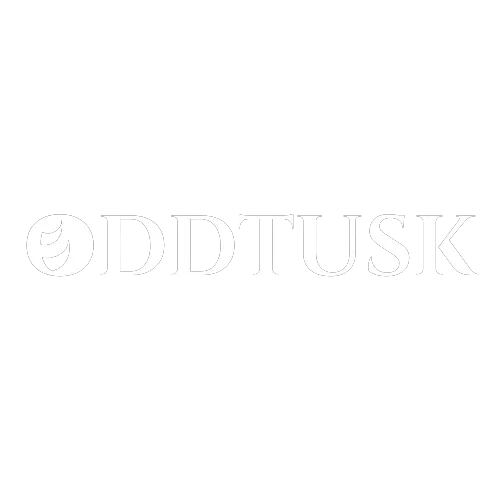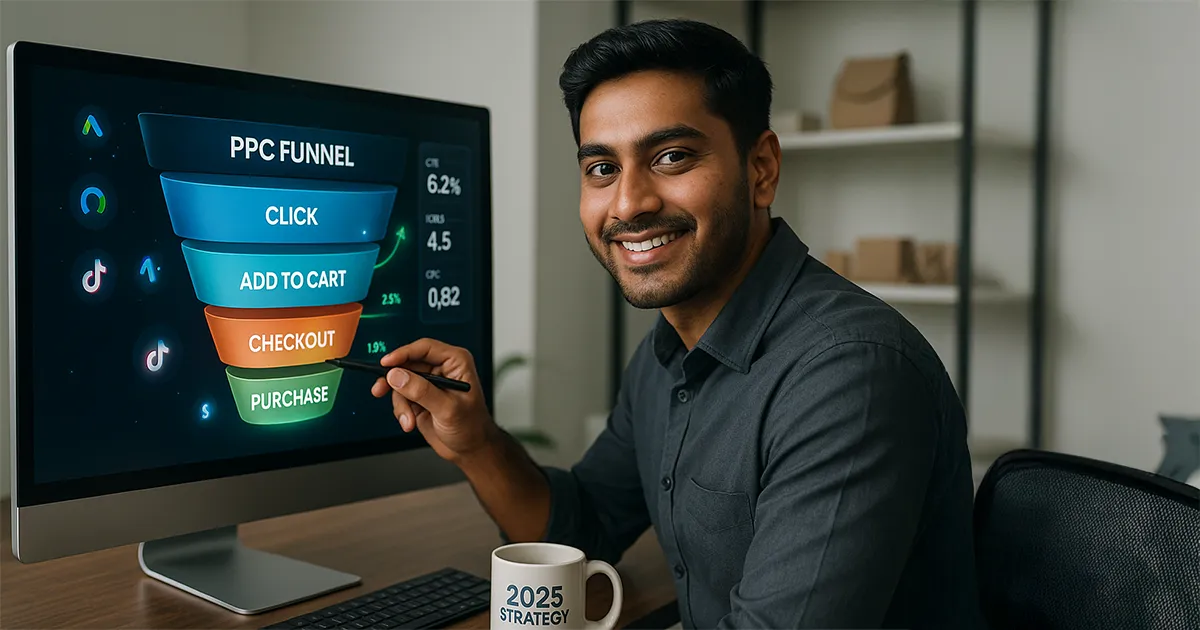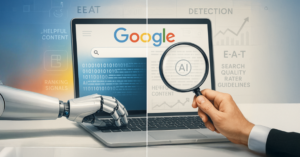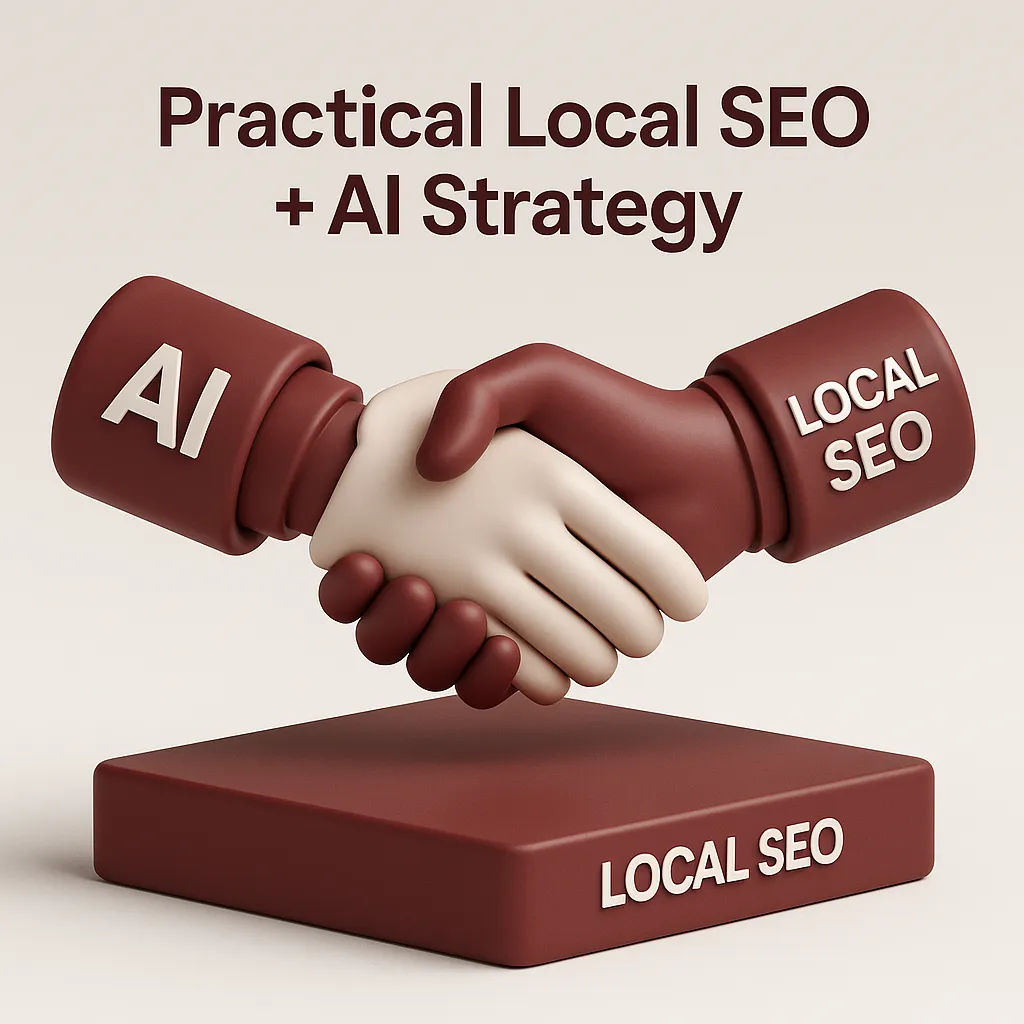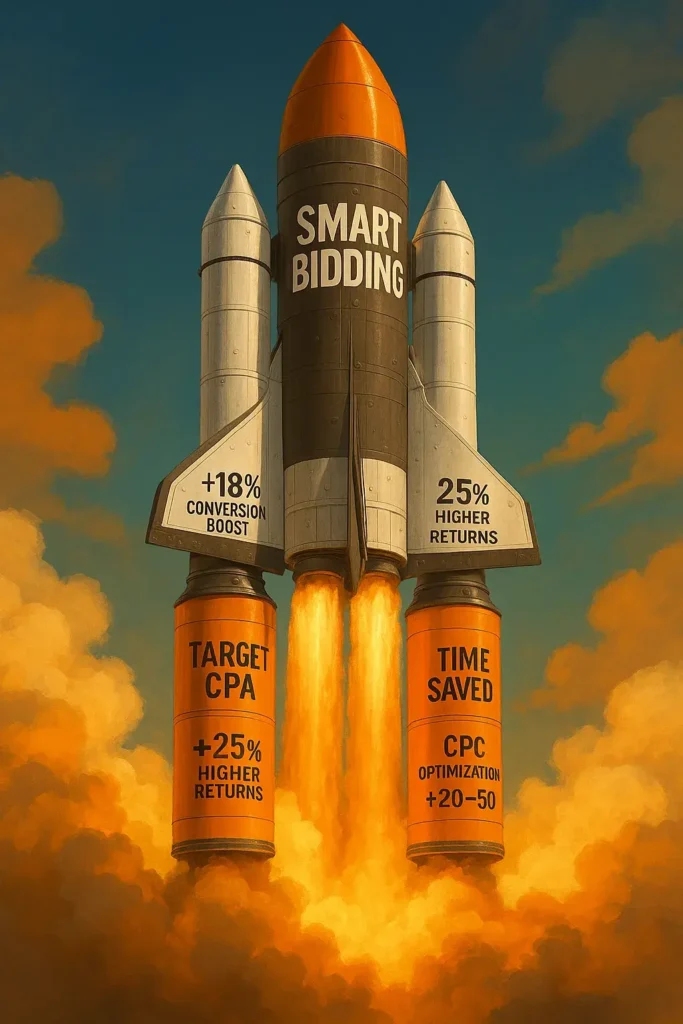Clicks Are Cheap—Conversions Aren’t
Running a PPC campaign in 2025 is no longer just about who can pay the most for top placement. It’s about who can create the smartest funnel. The truth is, anyone can get clicks. What sets successful brands apart is what happens after that click.
The days of relying on a single Google or Meta ad to drive a sale are gone. Today’s digital consumers are smarter, more skeptical, and heavily influenced by contextual trust. With rising CPCs, AI-generated competitor ads, and new formats like Performance Max and Advantage+ campaigns, your cost-per-click matters less if you’re not converting effectively.
This is where the PPC funnel comes into play. It’s not just about ads; it’s about the journey from curiosity to consideration to checkout. According to eMarketer, 93% of marketers say PPC is ‘effective’ or ‘highly effective’, making it the second most trusted digital channel after content marketing.
Whether you sell skincare or sneakers, the secret isn’t more traffic; it’s better sequencing. Let’s break down how to set up a PPC funnel that doesn’t just attract attention but also converts it.
What Is a PPC Funnel (And Why You Need One)
A PPC funnel is the paid advertising version of your sales journey, divided into stages: Top of Funnel (ToFu) for awareness, Middle of Funnel (MoFu) for consideration, and Bottom of Funnel (BoFu) for conversions. It’s not just a single ad; it’s an ecosystem.
In a traditional PPC campaign, brands often invest heavily in a single, conversion-optimized ad, hoping users will click and make a purchase. However, most consumers don’t behave that way anymore. Instead, they interact with multiple touchpoints, scroll through carousel videos, read reviews, and then, perhaps, convert.
A funnel-based PPC approach respects this behavior. It targets users differently at each stage. No surprise then that 79% of marketers say PPC is hugely beneficial to their overall strategy (Hanapin Marketing)
- ToFu: Introduce your brand (think hooks, education, storytelling).
- MoFu: Build credibility with case studies, user-generated content, or product demos.
- BoFu: Use retargeting and urgency-based calls to action to close the deal.

When you guide users instead of just chasing them, they trust you more and buy more.
Stage 1 – Awareness Ads (Top of Funnel)
Objective: Visibility, traffic, pixel building
At the top of your PPC funnel, it’s about discovery. Here, you introduce your brand to new audiences who have never heard of you before. Your goal isn’t to sell; it’s to spark curiosity, build familiarity, and gather pixel data for retargeting.
Platforms that shine here:
- Meta (Reels, Stories, Video Views)
- YouTube (In-stream, bumper ads)
- Google Display Network (visual awareness)
In fact, a report by Uberall states that 60% of mobile users are likely to click the first two or three search results, highlighting the importance of ad placement and visibility.

Best TOFU Ad Formats:
- Brand videos (“Why we started this”)
- Carousel ads with lifestyle imagery
- “Problem/Solution” short videos
The idea is to invite, not push.
Landing Pages:
- Collection overviews, style lookbooks
- Blog posts or surveys/ guides (“How to choose the right [product]”)
- Quiz entry pages
These build interest and keep bounce rates low while providing valuable data about user behavior to your pixel.
Pro Tip: Focus on value exchange, not clicks. Use CTAs like:
- “Learn more”
- “Discover your fit”
- “Take the quiz”

Remember, the goal here isn’t conversion; it’s visibility and qualification. You’re casting a wide net, and every click here helps grow your audience for the more targeted stages that follow.
Stage 2 – Consideration Ads (Middle of Funnel)
Objective: Educate, nurture, and pre-qualify
Now that people are aware of your brand, it’s time to build trust and nurture intent. In the Middle of Funnel (MoFu) stage, you’re addressing a warm audience; those who watched your video, visited your blog, or clicked on an ad but didn’t make a purchase.
Strategies:
- Retarget TOFU viewers and site visitors
- Serve up education, proof, and differentiation
Ad Formats That Work:
- User-generated content (UGC) testimonials
- “Why we’re better” side-by-side comparisons
- Product demos or unboxing
- Explainer videos
- FAQ-driven content and quiz results.
According to Wyzowl, 96% of people watch explainer videos to learn about a product or service, and 89% say those videos convinced them to make a purchase.
MOFU is where this content works hardest.
Landing Pages:
- Bestsellers page
- Comparison tables
- Category Pages
- Review walls or social proof-heavy pages
Key Tactics:
- Introduce offers (free shipping, first-time discounts)
- Use dynamic headlines for product categories
- CTA: “Explore styles,” “See what customers say”
You can start introducing urgency here, like “only a few left” or “back in stock,” but don’t push too hard on discounts yet. The aim is to educate and warm them up further, preparing them for the final conversion nudge.
Stage 3 – Conversion Ads (Bottom of Funnel)
Objective: Drive purchases and sign-ups
This is your closing stage, where prospects are ready to act. The Bottom of Funnel (BoFu) focuses on users who’ve shown clear intent: viewed products, added them to the cart, signed up for emails, or interacted multiple times. These are your warm leads, and they need a clear, confident CTA to convert.
Paid search drives 35% higher conversion rates for e-commerce sites compared to organic traffic, according to MarketLive, highlighting the difference between paid intent and search curiosity.
Best Performing Ad Types:
- Dynamic product ads (DPAs) with real-time pricing
- Urgency creatives (“Only 3 left!”)
- Testimonial mashups
- Flash sale countdowns
You’re not introducing your brand anymore; you’re reminding them of what they nearly bought and giving them a reason to complete the purchase.
Landing Pages:
- Product detail pages with reviews
- Discounted bundles
- Gift guides or curated collections
Copy Must-Haves:
- Free returns, COD, easy shipping
- Social proof (ratings, UGC, press)
- Safe checkout trust badges
Keep your copy focused on benefits but direct; for example, “Complete Your Order,” “Last Chance to Grab It,” or “Your Favorites Are Still Waiting.” This final touchpoint should reduce friction, boost confidence, and turn attention into action.
Post-Purchase PPC – Don’t Stop at Checkout
Do you think the funnel ends at the “thank you” page? Think again. Post-purchase PPC is one of the most overlooked stages in a customer’s journey. This is where your most cost-effective conversions can occur. Once someone buys from you, they are much more likely to purchase again, as long as you deliver the right message at the right time.
Campaign Ideas:
- Cross-sell accessories or restocks
- Promote subscription or bundle upgrades
- Ask for reviews via Facebook Custom Audiences or email retargeting
A satisfied customer is valuable; you have already earned their trust. Platforms like Google’s Customer Match, Microsoft Ads remarketing, and Meta’s Custom Audiences let you target buyers specifically after a purchase.
Creative Ideas:
- “Get 15% off your next order.”
- “Refer a friend and both get ₹500”
- “Unlock loyalty perks after the 2nd order.”
Post-purchase PPC isn’t just about making repeat sales. It focuses on turning buyers into brand advocates. In 2025, when acquisition costs are rising, maximizing customer lifetime value through smart follow-ups is not optional; it’s a strategy.
Tools & Tech to Build Your Funnel (2025 Edition)
In 2025, building a PPC funnel doesn’t involve juggling five dashboards manually. You need tools that work together, adjust in real time, and optimize across platforms. Fortunately, the right tech stack can do just that.
Top Funnel-Building Tools:
- Google Ads (Performance Max): Automates TOFU-BOFU with smart segmentation
- Meta’s Advantage+ Shopping Campaigns: Great for scale with consolidated creatives
- Klaviyo & Triple Whale: Connect email, retention, and attribution data
- Northbeam or Hyros: Funnel-based tracking and marketing mix modeling

Bonus: Sync your CRM and analytics. Use GA4, Shopify pixels, and server-side tagging to create clean, privacy-compliant data flows.
Your PPC funnel is only as smart as the tools behind it. Automate ruthlessly. Analyze deeply.
Creative That Converts at Every Stage
Great creatives are not just visually appealing; they are strategically designed to match intent and psychology at every stage of the funnel. In the scroll-obsessed world of 2025, your ad creative needs to stop thumbs and start stories.
What Works at Each Stage:
TOFU: At the Top of Funnel (ToFu), your objective is to introduce the brand.
- Story-driven visuals
- Founder-led video content
- Identity-based messaging: product teasers, brand story reels (“This is for people who…”)
MOFU: At the Middle of Funnel (MoFu), focus on proof and benefits.
- FAQ-style ads
- UGC explaining benefits
- Problem/solution frameworks
- Testimonials
BOFU: By the time users reach the Bottom of Funnel (BoFu), they are ready to convert; just make sure not to confuse them.
- Offer-focused ads
- Scarcity + reviews (“Only 2 left in stock!”)
- Trust-building (guarantees, returns, fast delivery)
Pro Tip: Test at least three creatives for every funnel stage, and rotate them every 14 to 21 days to prevent fatigue. Winning creatives are rarely created; they are tested into existence.
Measuring Funnel Performance (What Actually Matters)
If you’re running a funnel and still only tracking CTR and cost per click, it’s time for an upgrade now. In 2025, smart marketers focus on stage-specific KPIs that match the intent of each funnel level.
Key Funnel KPIs:
- TOFU: Track CTR and engagement. You want to know if your ads are grabbing attention and starting journeys.
- MOFU: Focus on time on site, bounce rate, and content interaction. These metrics show how well your content nurtures.
- BOFU: Monitor ROAS (Return on Ad Spend) and conversion rate (CVR). These are the real revenue drivers.
Attribution Matters:
- Last-click attribution is dead.
- Use GA4 + UTM strategies to track multi-touch funnels.
- Track cohort LTV to see how different stages impact long-term value.
Funnel Fix Tip: Audit your funnel monthly. Look for drop-off points, rising CAC, and ad fatigue. Funnel performance is a system; if one part fails, conversions slow down.
So, the best PPC strategy isn’t about spending more. It’s about measuring what matters and adjusting constantly.
Conclusion: Don’t Just Chase Clicks—Engineer Decisions
You don’t need more ads. You need a smarter funnel; one that guides the user from curiosity to conversion with clarity, context, and intent-focused creativity.
In 2025, the winning formula is not just about targeting the right people. It’s about targeting them in the right sequence with the right message at the right moment, meeting your customer where they are, not where you wish they were.
That’s where your competitive edge lies.
At Oddtusk, we don’t just run campaigns. We build high-converting PPC funnels that turn ad spend into loyal customer engines. From top-of-funnel storytelling to bottom-of-funnel performance ads, we create journeys that grow profitably.
Want us to help architect your PPC funnel from scratch or optimize what’s broken?
Let’s build your conversion engine.
